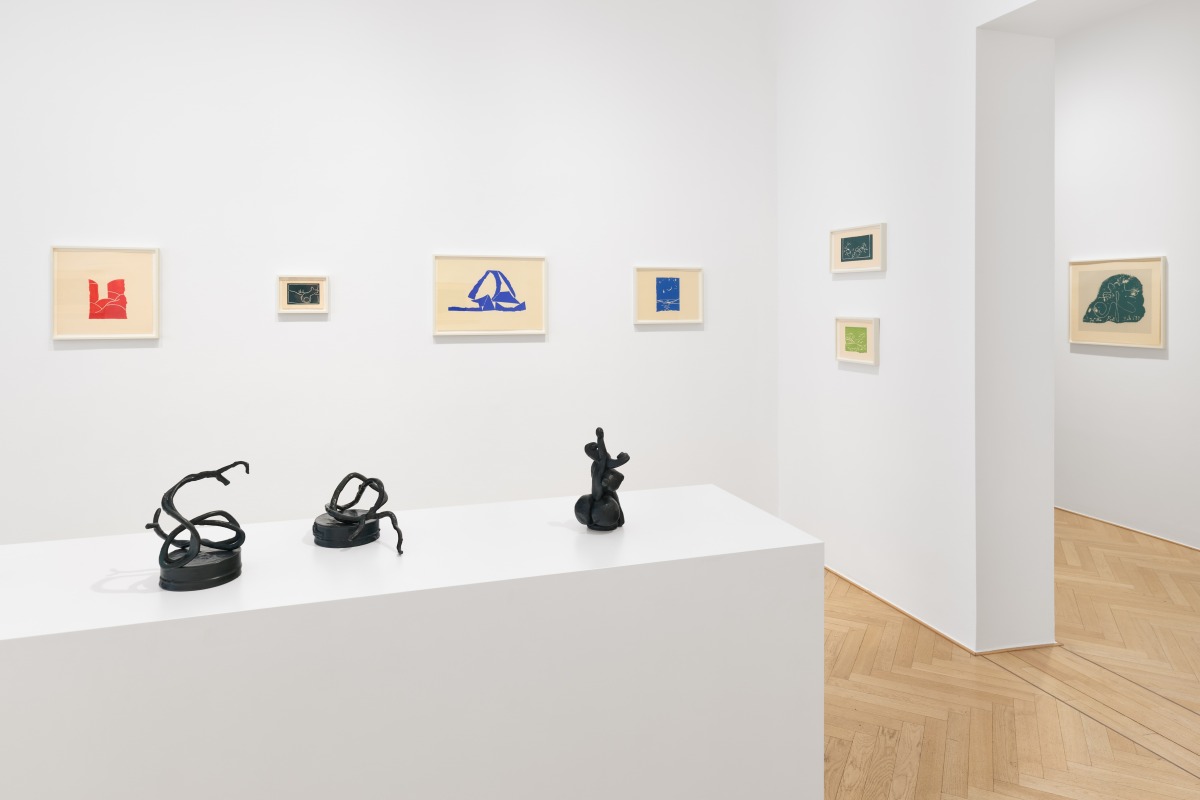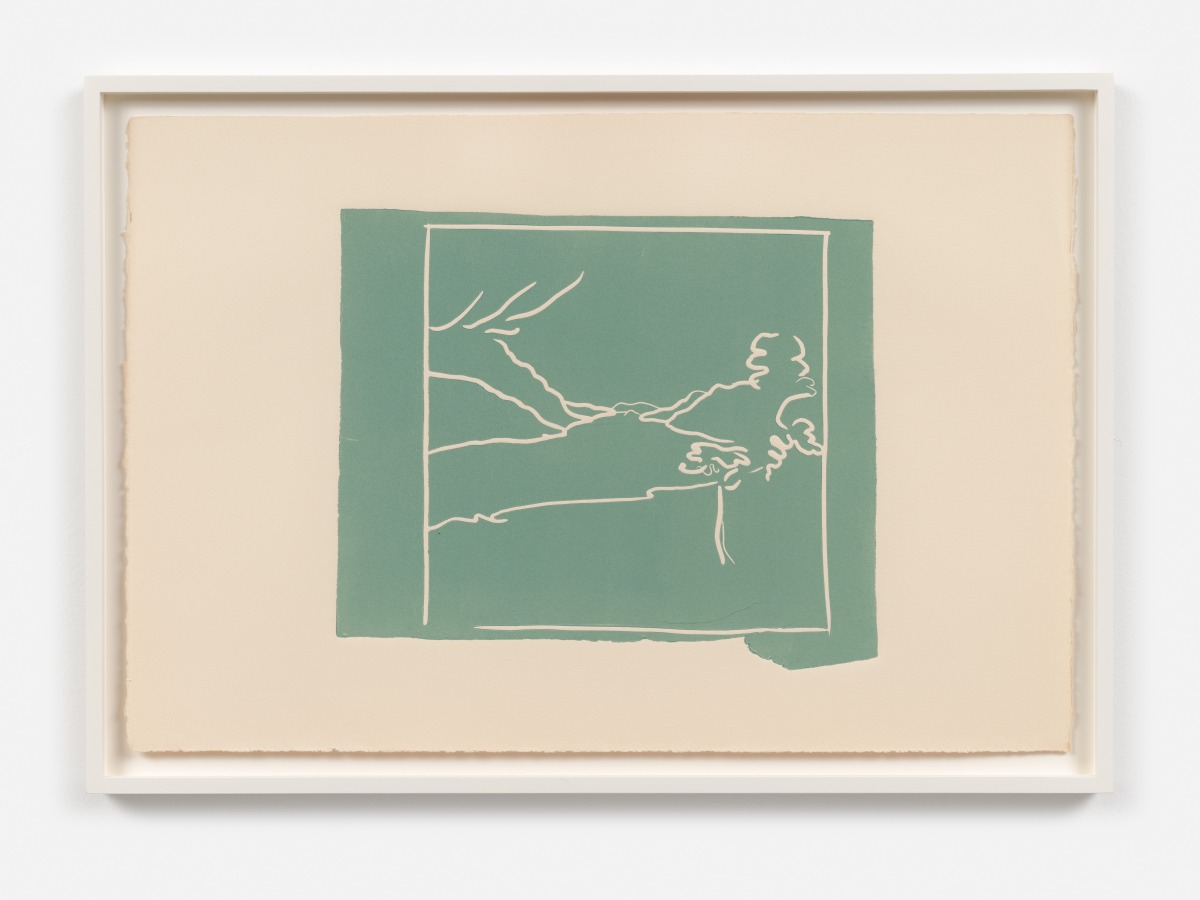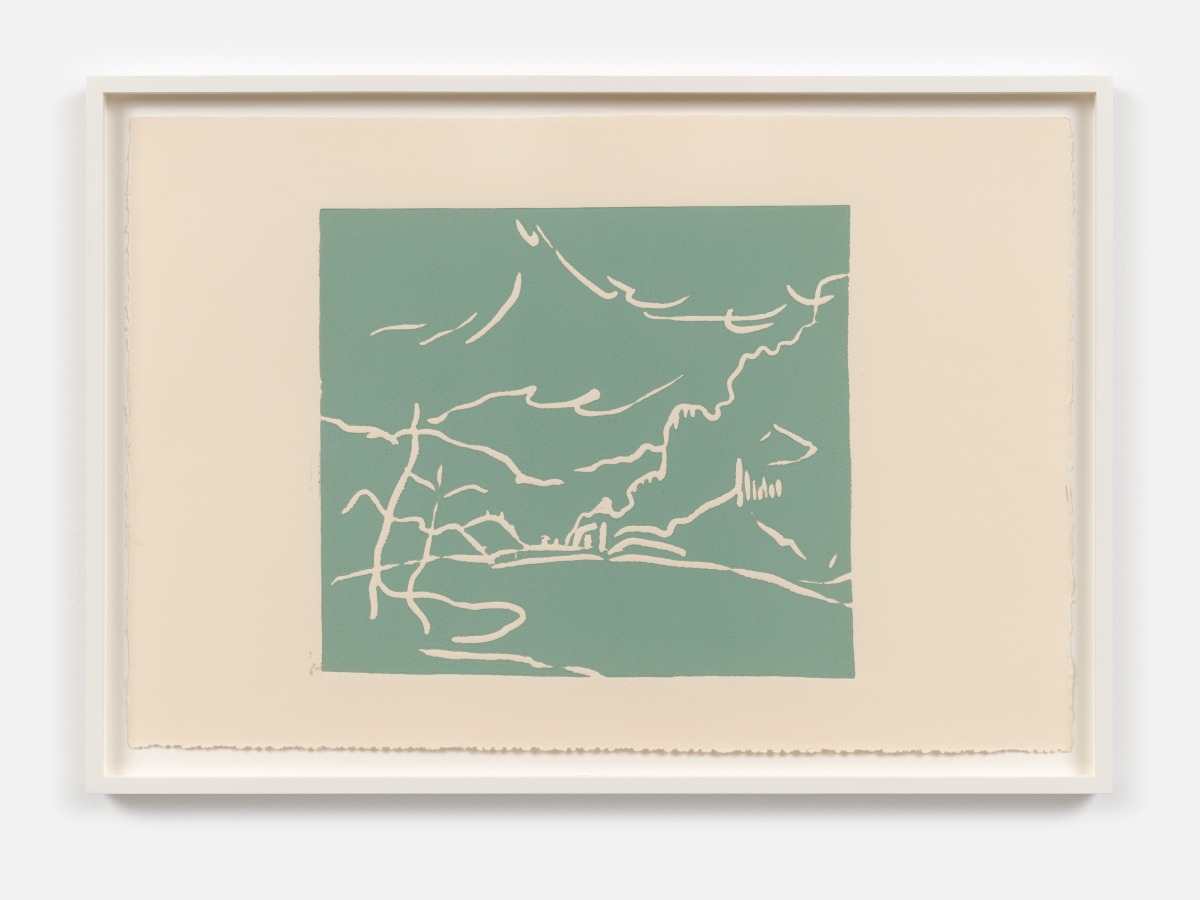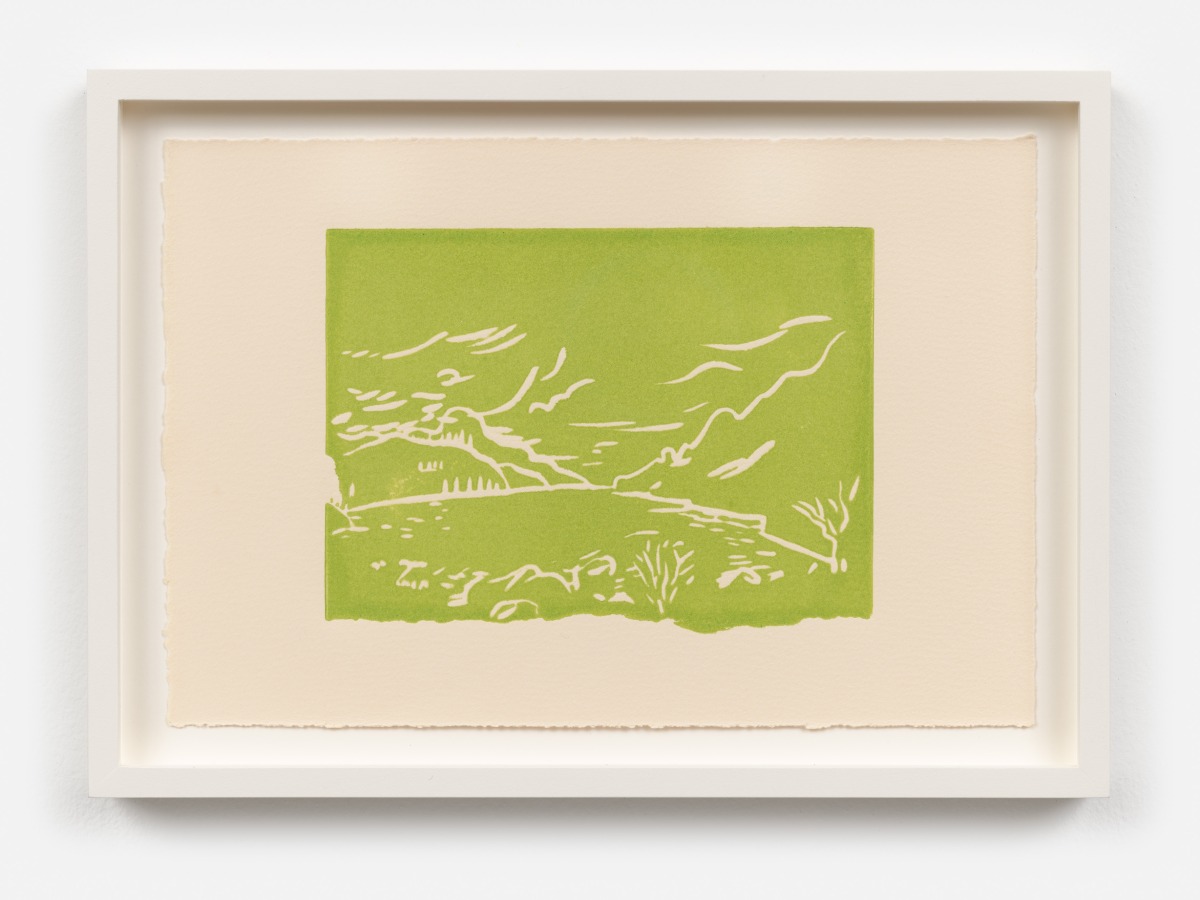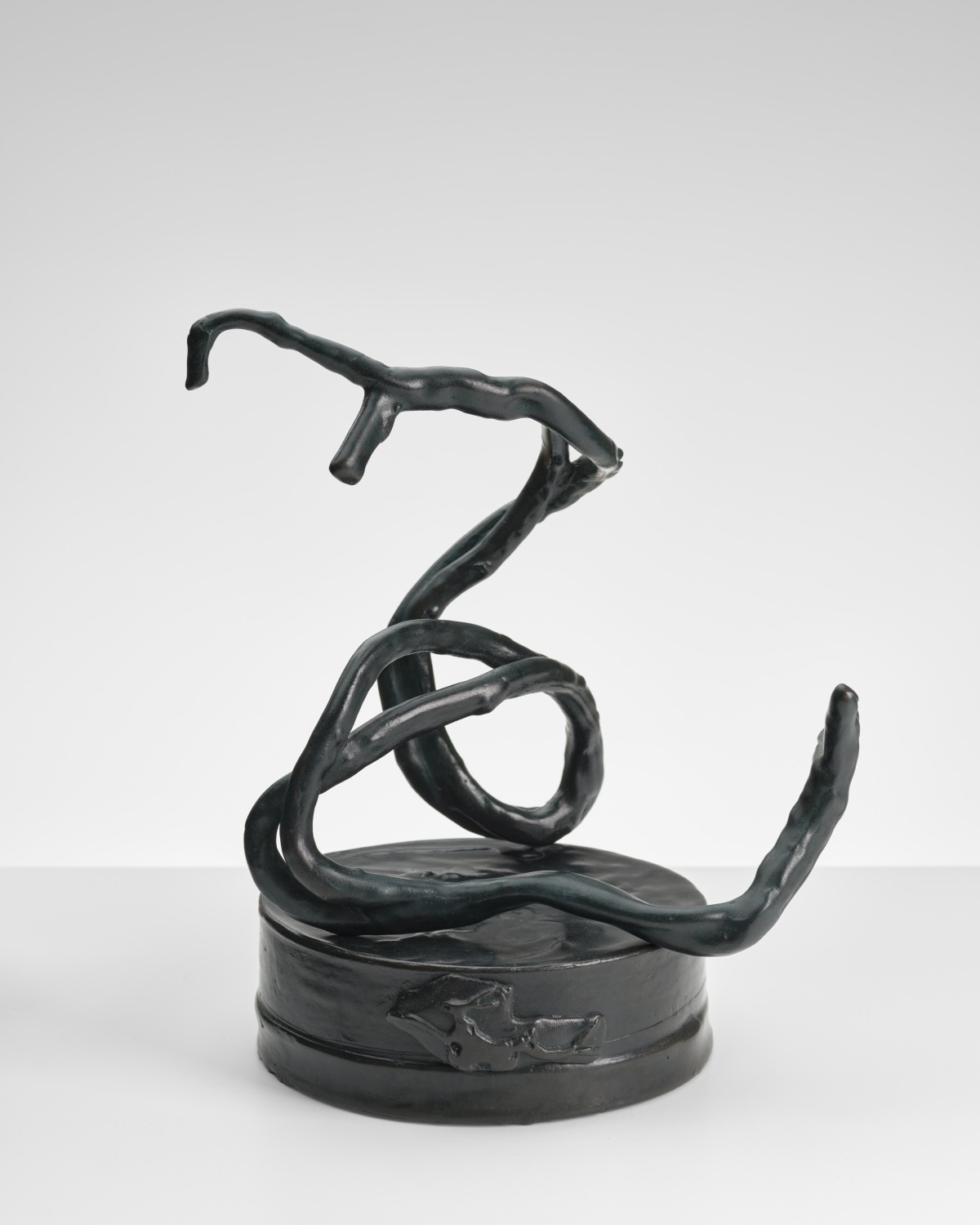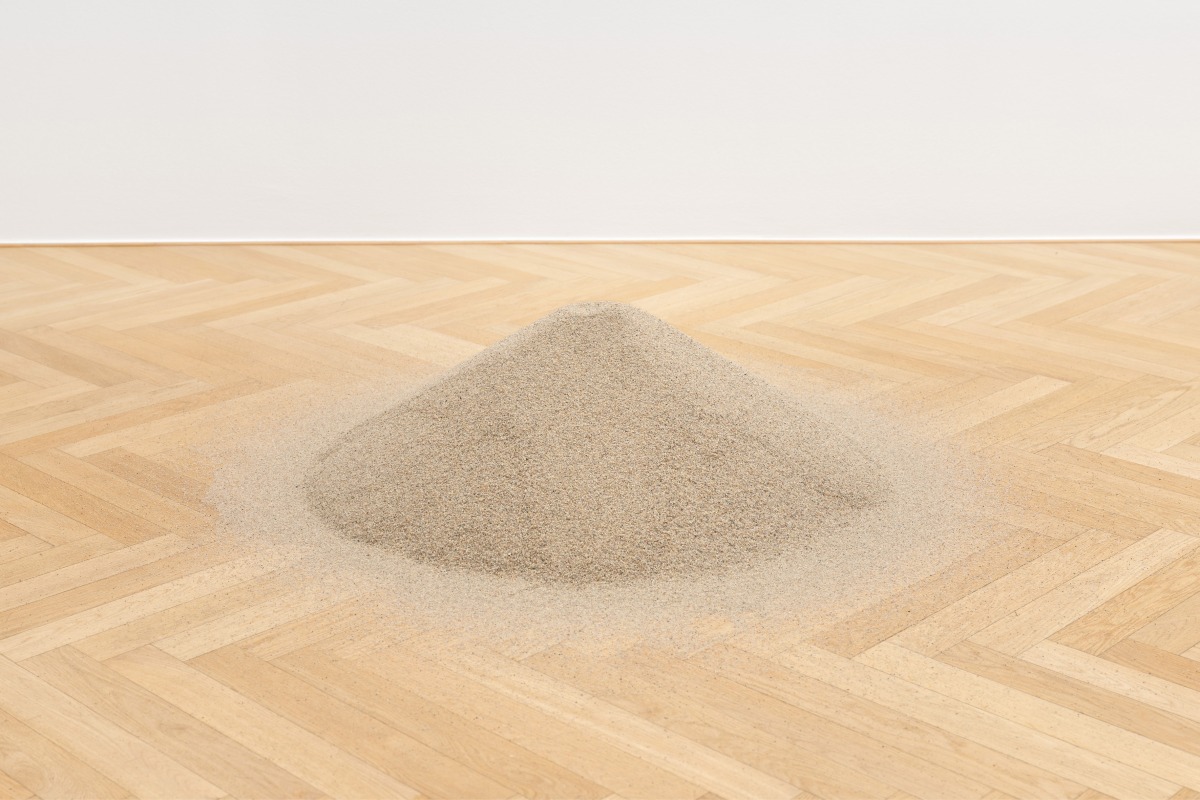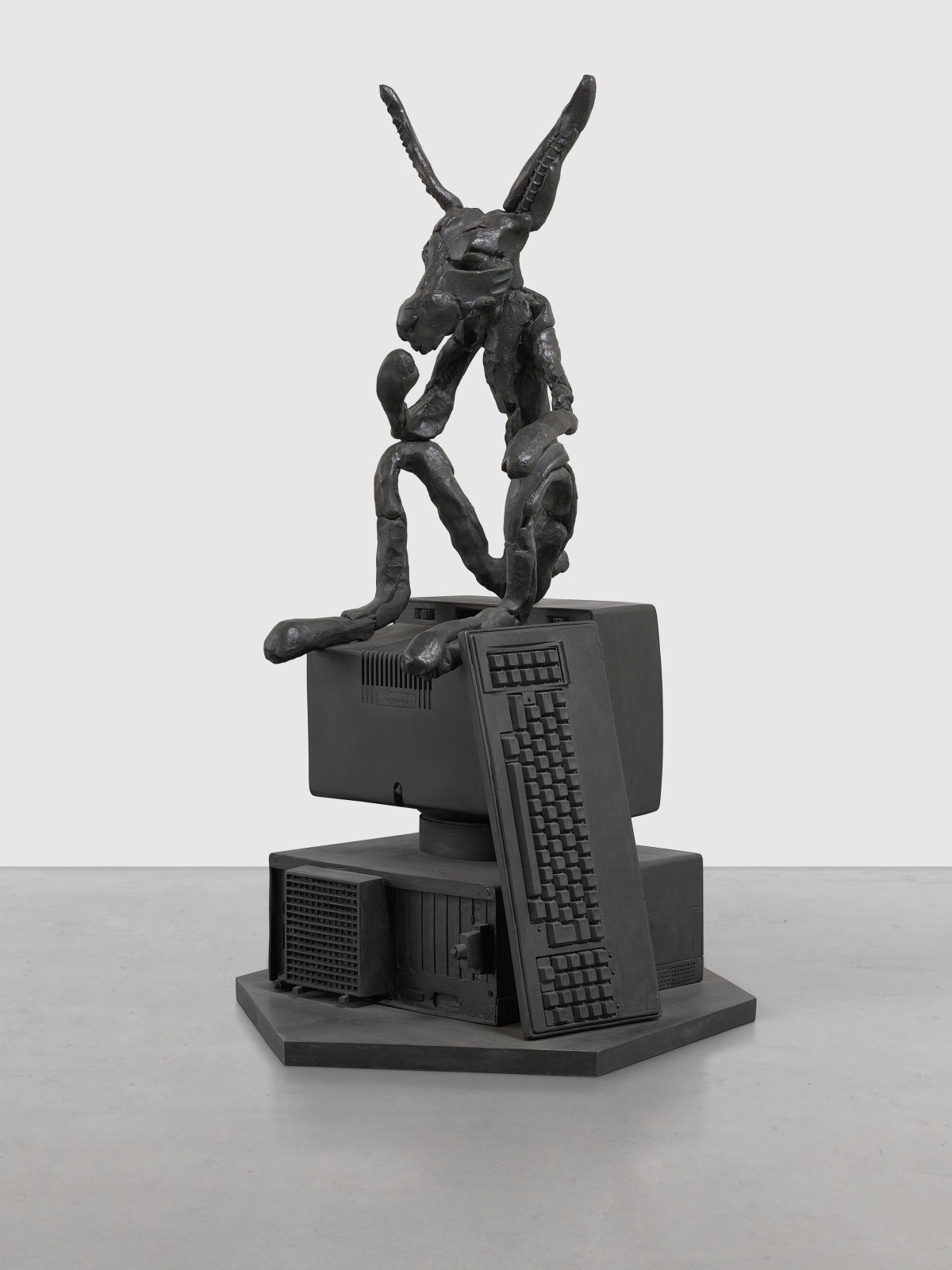Galerie Max Hetzler is pleased to present Sculpture is always going on, a solo exhibition of works by Barry Flanagan in the gallery spaces at Bleibtreustraße 45 and Bleibtreustraße 15/16, in Berlin.
One of Britain's most important and innovative sculptors, Barry Flanagan worked across a variety of media over his five-decades-long career. Without establishing a hierarchy, he explored their properties, texture and elasticity. From industrial sand, rope, cloth, plaster and stone to elusive elements such as daylight, moonlight, sounds and smells, Flanagan embraced all materials for their potential to be turned into sculptural forms. This novel approach enabled a radical change in the understanding of sculpture. After exploring minimalistic practices in the 1960s and 1970s, the artist turned to figuration from 1979 onwards. During this time, he created his biomorphic bronze sculptures, which often allude to animals, human figures or mythological creatures, and constitute some of his best-known works.
In addition to Flanagan’s conceptual works, linocuts and film, mostly created in the 1960s and 1970s, the current exhibition also includes audio and visual recordings of the 1998 performance Mantra of the Awoken Powers, as well as his later bronze works. A poetic, mystical reference to nature is consistently present. The exposure of processes and methods is another central theme in Flanagan's oeuvre: ‘My work isn’t centred in experience. The making of it is itself the experience,’ he explained. ‘Truly, sculpture is always going on. With proper physical circumstances and the visual invitation, one simply joins in and makes the work.’ 1 Through this approach, Flanagan allows the materials to find their own sculptural form.
In the work 2 space rope sculpture (gr 2sp 60) 6 '67, 1967, for example, is a heavy, dyed rope winding across the floor of two exhibition rooms at Bleibtreustraße 45. With a drawing-like lightness and a flowing, autonomous character that is typical of Flanagan's sculptures, this work reflects the title of the exhibition. The recently rediscovered film the works, from 1969, shows the process of creating a ‘sand pour’ like sand pour, 1968, exhibited here. The sand seems to remain in a solid form, which is in fact highly fragile. This contrast between weight and volume, dynamics and statics can also be found in the later bronze works, such as Dragon I, 2002, where the solid metal – delicate and gracefully intertwined – appears almost breakable.
From the late 1970s onwards, Flanagan explored the depiction of various animals as bronze sculptures. The hare, with its mythological nature and its symbolism of unpredictability, resurrection and renewal, fitted particularly well into Flanagan's oeuvre. Whether boxing, as in Large Boxing Hare on Anvil, 1984, or dancing, as in Left and Right Handed Nijinski on Anvil Point, 1999, the animal is imbued with a dynamic, often whimsical character. In Thinker on Computer, 1996, a hare sits pensively on a computer, in allusion to Auguste Rodin's Le Penseur, 1904, emphasising the animals’ human-like character. Masterfully combining the fantastical with the quotidian, Flanagan’s work thus mediates between the spiritual and the human world.
Barry Flanagan (1941–2009) was born in Prestatyn, North Wales. The artist lived and worked in London and Dublin, and died in Santa Eulalia del Río, Ibiza, Spain. Flanagan’s work has been internationally exhibited in institutions and public spaces including Knokke-Heist (2022); Ikon Gallery, Birmingham (2019); Kröller-Müller Museum, Otterlo (2018); Tate Britain (2016 and 2011); Chatsworth House, Derbyshire (2012); Vero Beach Museum of Art, Florida (2008); Kunstraum Deutsche Bank Salzburg (2007); Irish Museum of Modern Art, Dublin, and Dublin City Gallery The Hugh Lane (2006); S.M.A.K. (2005); Kunsthalle Recklinghausen; Musée d’art Moderne et d’art Contemporain, Nice (both 2002); Tate Liverpool (2000); Grant Park, Chicago (1996); 54th to 59th Street, New York; University of Iowa Museum of Art (both 1995); Musée des Beaux-Arts de Nantes (1993); Yorkshire Sculpture Park, Wakefield (1992); Tate, London (1986); Centre Georges Pompidou, Paris (1983); Whitechapel Art Gallery, London (1982); Institute of Contemporary Arts, London (1981); Van Abbemuseum, Eindhoven; Serpentine Gallery, London (both 1977); and The Museum of Modern Art, New York (1974), among others. The artist represented Britain at the 40th Venice Biennale in 1982.
Flanagan’s works are in the collections of the Art Institute of Chicago; Centre Pompidou, Paris; Hirshhorn Museum and Sculpture Garden, Washington, D.C.; Irish Museum of Modern Art, Dublin; Kunsthaus Zürich; The Museum of Modern Art, New York; National Gallery of Victoria, Melbourne; National Museum Cardiff, National Museums and Galleries of Wales; Peggy Guggenheim Collection,Venice; San Francisco Museum of Modern Art; Scottish National Gallery of Modern Art, Edinburgh; Solomon R Guggenheim Museum, New York; Staatsgalerie Stuttgart; Stedelijk Museum Voor Actuele Kunst, Amsterdam; Tate, London; Tokyo Metropolitan Art Museum; Van Abbemuseum, Eindhoven; Victoria & Albert Museum, London; and Walker Art Center, Minneapolis, among others.
1 B. Flanagan, ‘Sculpture made visible: Barry Flanagan in discussion with Gene Baro’, Studio International, Vol. 178, No. 915, October 1969.
Press contact:
Galerie Max Hetzler
Honor Westmacott
honor@maxhetzler.com
Berlin: +49 30 346 497 85-0
www.facebook.com/galeriemaxhetzler
www.instagram.com/galeriemaxhetzler


